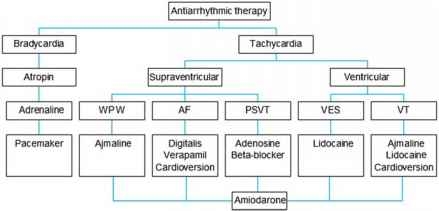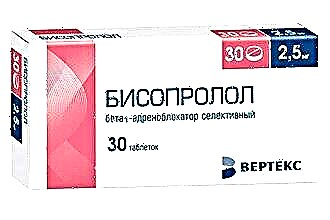Labyrinthitis is a severe ENT disease characterized by the occurrence of inflammatory processes in the labyrinth of the inner ear, which consists of the cochlea and semicircular canals. Pathological changes in the structures of the labyrinth lead to dysfunction of the vestibular apparatus, as a result of which a person experiences dizziness and vomiting. Pathology develops as a result of an infectious lesion of the middle ear, the development of meningitis, or intracranial trauma.
Etiology

The middle ear is separated from the labyrinth (inner ear) by a thick membrane that consists of connective tissue. This prevents the direct penetration of pathogenic flora into the semicircular canals or the cochlea. For this reason, inflammation of the inner ear is 10 times less common than otitis media. However, untimely treatment of ear pathologies and general infectious diseases can lead to the development of inflammation in the labyrinth, where pathogens enter the hematogenous route.
Among the main provocateurs of pathological processes in the tissues of the labyrinth are such pathogenic bacteria as Moraxella Catarrhalis, staphylococci, streptococci, etc. Their active development occurs only in the case of a weakening of the body's immune defense, which is possible with:
- hypothermia;
- avitaminosis:
- flu;
- tuberculosis;
- skull injuries;
- unbalanced diet;
- chronic diseases;
- intracranial pathologies.
In 90% of cases, labyrinthitis is a consequence of inflammatory processes occurring in the tympanic cavity, which belongs to the main section of the middle ear.
Clinical manifestations
The severity of the clinical manifestations of internal otitis media is largely determined by the causes of its occurrence. Usually, unilateral inflammation occurs in the ear cavity, which leads to the appearance of characteristic vestibular signs: nausea, vomiting, impaired coordination of movements, etc. In the event of foci of inflammation in both labyrinths, disturbances in the work of the vestibular apparatus will manifest themselves only with closed eyes or in complete darkness.
The symptomatic picture of ear pathology consists mainly of the following signs:
- nystagmus is the result of inflammation of one of the labyrinths in the inner ear. Inflammation of the nerves and overloading of the subcortical structures of the brain leads to involuntary chaotic eye movements, as a result of which it becomes difficult for the patient to focus his vision on a separate object;
- vomiting - occurs when the vagus nerve is excited, which in turn irritates the upper gastrointestinal tract, provoking nausea and vomiting;
- hyperhidrosis - excessive stimulation of the vagus nerve provokes disturbances in the work of skin structures and sweat glands, which leads to increased sweating;
- dizziness is a consequence of inflammatory processes occurring in the semicircular canals of the labyrinth. It is these structures that are responsible for the spatial orientation of a person and the coordination of movements;
- hearing loss is the result of a purulent lesion of the cochlea, which belongs to the components of the "receiver" of sound vibrations in the hearing aid;
- tinnitus (noises) - appear with an infectious lesion of the auditory nerve, which leads to the occurrence of auditory hallucinations, such as squeaking, hissing, rustling, etc.;
- tachycardia - occurs due to overexcitation of the vagus nerve, which is able to change the conduction of the heart muscle.
Important! Otitis media of the inner ear often leads to the appearance of purulent lesions in the ear cavities. Purulent processes can cause the development of sensorineural hearing loss.
Forms of the disease
There are several classifications of ear pathology, which are determined by the nature of the inflammation, the symptomatic course of the ENT disease and the location of the lesions. Accurate determination of the form of otitis media guarantees effective treatment of the disease and prevention of severe complications that can cause disability.
According to the clinical course, the disease can be:
- obvious - characterized by an acute onset of the disease, as evidenced by pain in the ear, dizziness, vomiting, hyperthermia, etc. Acute labyrinthitis is characterized by severe dysfunction of the dynamic and static balance of the body, as well as the development of sound hallucinations;
- latent - a sluggish inflammation leads to a gradual disruption of the basic functions of the vestibular apparatus, the appearance of a fistular sign and a vestibulosensory reflex.
According to the mechanism of development of inflammatory processes, labyrinthitis is conventionally divided into 4 types:
- tympanogenic - develops in case of penetration of an infectious pathogen from the middle ear cavity into the semicircular canals or cochlea;
- hematogenous - caused by the penetration of pathogenic pathogens into the structures of the labyrinth with blood flow;
- traumatic - occurs as a result of serious trauma to the skull, gunshot wounds, etc.;
- meningogenic - caused by the penetration of viruses and bacteria from the meninges of the brain through the auditory canal.
By the nature of inflammation, otitis media can be exudative, necrotic or purulent. The appearance of leukocyte infiltration in the internal structures of the ear indicates the spread of bacterial flora, which is fraught with serious complications. Therefore, in the presence of general symptoms of the disease, you should immediately seek help from an otolaryngologist.
Important! In the presence of purulent processes in the ear cavity, dry heat cannot be used. Warming up promotes the development of bacterial flora, which leads to the spread of purulent lesions.
Drug treatment
Conservative treatment of ear pathology involves the use of systemic and local drugs that have pronounced anti-inflammatory, analgesic and antibacterial properties. Antimicrobial agents are selected taking into account the possible penetration of the components of the agent into the structures of the inner ear through the hematolabyrinth barrier.
In the event of intracranial complications, conservative treatment will be ineffective. Untimely surgery in this case can cause disability or death.
Eliminate the pathogenic flora in the labyrinth and stop the symptoms of internal otitis media using the following drugs:
- antiemetics ("Fenegran", "Compazin") - eliminate dizziness, nausea and vomiting;
- vestibulolytics ("Alfaserk", "Betagistin") - inhibit the excitability of the vestibular nuclei, which helps to eliminate dizziness and vomiting; normalize blood circulation in the semicircular canals, which leads to the restoration of the performance of the vestibular apparatus;
- sedatives ("Lorazepam", "Diazepam") - inhibit the hyperactivity of the nervous system, which helps to normalize the functioning of the vestibular apparatus and eliminate nystagmus;
- antiphlogistic agents ("Naklofen", "Dicloran") - inhibit the synthesis of inflammatory mediators, promote anesthesia and eliminate hyperthermia;
- blockers of histamine receptors ("Bonin", "Dedalon") - reduce the susceptibility of histamine receptors to inflammatory mediators, which accelerates the process of tissue regeneration in labyrinth structures;
- antibiotics ("Oxacillin", "Amoxicillin") - destroy the cellular structures of bacteria, which leads to a reduction in the number of pathogens in the foci of inflammation;
- neuroprotectors ("Tserakson", "Semax") - prevent the development of inflammatory processes in the nerves of the brain, improve the energy supply of nerve cells;
- NSAIDs ("Nise", "Ibuprofen") - stop inflammation and pain, thereby eliminating tissue swelling and normalizing the drainage function of the auditory tube.
To improve trophic processes in the affected tissues, vitamins of the B, K and C groups should be used. They normalize cell metabolism, which contributes to the epithelialization of inflamed tissues.



